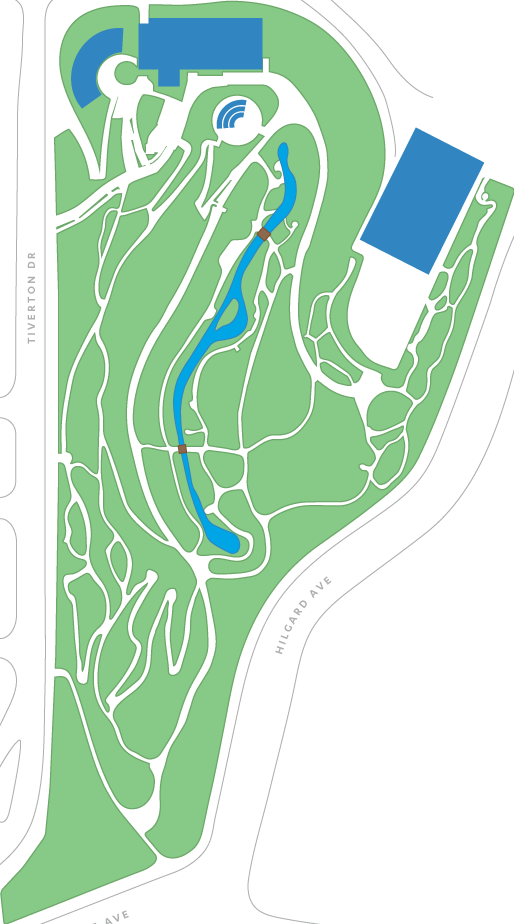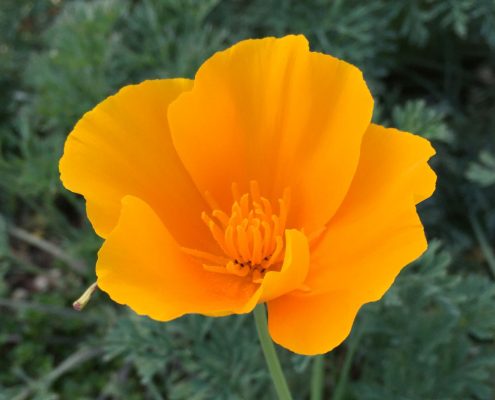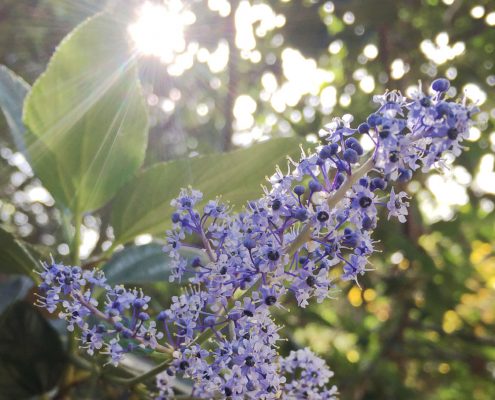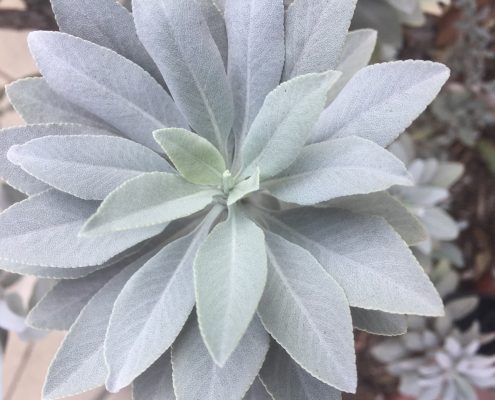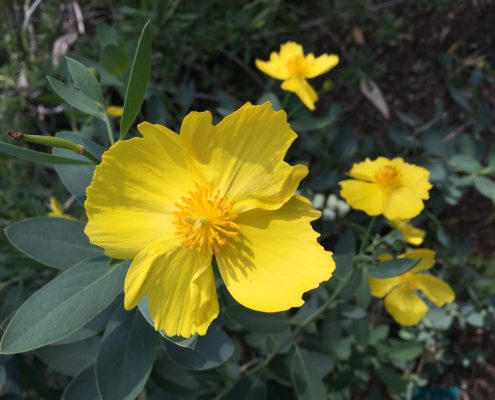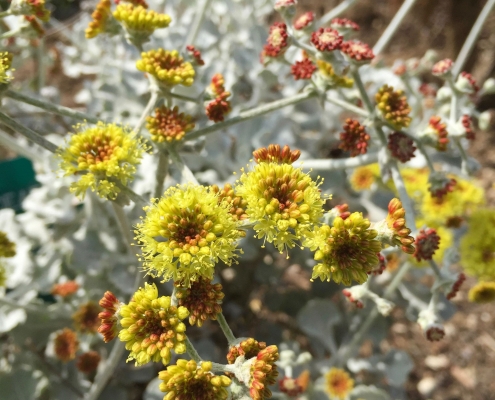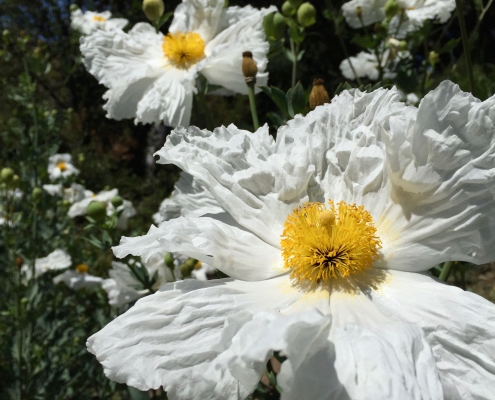![]()
California Native Plants
California is one of the world’s centers of biodiversity and has many species found nowhere else. A range of habitats exist, from forested mountains to dry deserts. Most of the state has a Mediterranean climate with mild, wet winters and warm, dry summers.
During spring, you can spot our state wildflower, the California poppy (Eschscholzia californica). Like other native annual plants, the poppy dies in summer. Many plants lose their leaves or limit growth until winter rains revive them. Other woody plants like the Canyon oak (Quercus chrysolepis) have small, tough leaves that can withstand the dry summers and are green year-round.
Plantas Nativas de California
California es uno de los centros de biodiversidad del mundo donde habitan especies que no se pueden encontrar en otros lugares. Existe un amplio rango de hábitats que van desde las montañas boscosas hasta los áridos desiertos. La mayor parte del estado tiene clima mediterráneo con inviernos húmedos y no extremosos, y veranos secos y calurosos. En verano, muchas de las plantas nativas de California entran en dormancia, perdiendo sus hojas o limitando su crecimiento hasta la llegada de las lluvias en invierno. Durante la primavera puedes encontrar a la flor silvestre de nuestro estado, la amapola de California (Eschscholzia californica), que el resto del año muere o se encuentra en dormancia. Otras plantas tienen hojas resistentes y pequeñas que logran sobrevivir durante todo el año. Tal es el caso del encino de las barrancas (Quercus chrysolepis) que se encuentra sobre la colina.
Explore Further
The California Floristic Province (CFP), experiences a Mediterranean-type climate of warm dry summers and cool wet winters. The CFP extends from Southern Oregon down through California and into the northwestern portion of Baja California, Mexico. The California Native Plants collection here focuses on the plants of Southern California and the southern CFP. Subsections include California Deserts, Northwest Baja California, and Channel Islands/Coastal Southern California. The broken concrete walls are home to many live-forever rosettes (Dudleya), and a variety of sage (Salvia) species can be seen here. The lower portion of steep slope on the northern edge of the area includes an annual wildflower bed, which blooms profusely in the spring.
